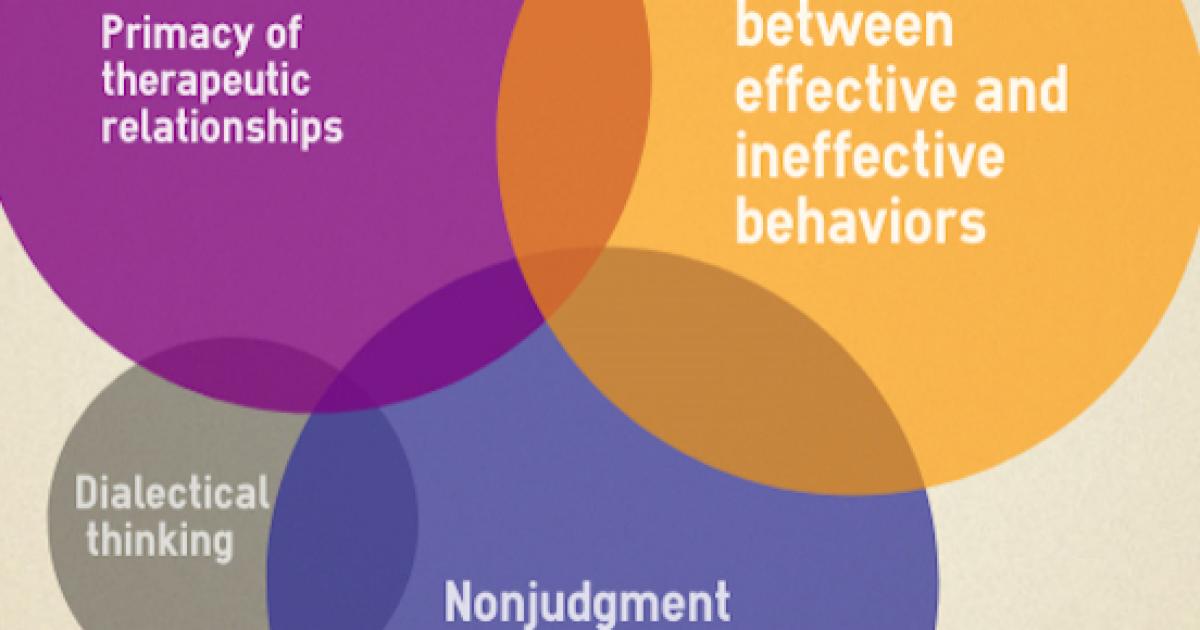Dialectical Behavior Therapy (DBT) is a multifaceted therapeutic approach that resonates profoundly with contemporary mental health discussions. Developed by Dr. Marsha Linehan in the late 1980s, this modality emerged primarily for individuals diagnosed with Borderline Personality Disorder (BPD) but has since established efficacy across a myriad of psychological conditions. Young individuals, in particular, are experiencing escalating levels of anxiety, depression, and emotional dysregulation. Consequently, understanding the core principles of DBT can be an invaluable asset in their pursuit of mental well-being.
DBT is rooted in a dialectical philosophy, which asserts that disparate elements can coexist harmoniously. This notion is pivotal in therapeutic contexts, as it encourages clients to embrace conflicting emotions as they engage in healing. The therapy is structured around four core modalities, each contributing to the comprehensive framework designed to foster emotional resilience and behavioral change.
The foundations of DBT rest firmly upon four therapeutic pillars: mindfulness, distress tolerance, emotional regulation, and interpersonal effectiveness. Each component is imbued with techniques and strategies tailored to assist individuals in navigating their emotional landscapes.
Mindfulness is the cornerstone of DBT and serves as the fundamental skill from which others are developed. It entails cultivating awareness of the present moment while simultaneously accepting one’s thoughts and feelings without judgment. This practice fosters a profound connection between the self and one’s surroundings, enabling individuals to anchor themselves amid the turmoil of their thoughts and emotions. By practicing mindfulness, clients may find solace in the present, thus alleviating the distress associated with ruminative thinking.
Transitioning into distress tolerance, this skill emphasizes the importance of tolerating difficult emotions and situations rather than opting for avoidance or harmful behaviors. Distress tolerance techniques equip individuals with tools to navigate crises with composure. These include practices such as self-soothing, distraction, and radical acceptance—an approach that encourages embracing reality as it is, rather than striving for an idealized version of life. This acceptance cultivates resilience, fostering the ability to endure instead of immediately attempting to alter unfavorable circumstances.
Following distress tolerance, emotional regulation emerges as a vital component of DBT. This skillset focuses on managing and transforming intense emotional states into more manageable levels. Individuals learn to identify and label their emotions accurately, recognizing triggers and developing proactive strategies to modify emotional responses. Techniques such as opposite action—where by acting contrary to one’s emotional impulses, new emotional experiences can emerge—are central to this skillset. This aspect of DBT empowers individuals by enhancing their understanding of their emotional responses and equipping them with the tools necessary to regain control over their feelings.
Lastly, interpersonal effectiveness is an indispensable component of DBT that revolves around fostering healthy relationships. Through this modality, individuals are taught techniques for assertive communication, boundary-setting, and conflict resolution. These skills are essential for nurturing positive interactions and reducing interpersonal conflict, which can often exacerbate mental health challenges. By cultivating effective communication and relationship skills, clients can build supportive social networks that are responsive to their emotional needs.
Beyond the core principles, it is essential to recognize the application of DBT in a broader context. The therapy is not merely confined to traditional clinical settings; it has been adapted into various formats, including individual therapy sessions, group skills training, telephone coaching, and therapist consultation teams. This flexibility ensures the accessibility of DBT for diverse populations, including young individuals navigating the complexities of modern life. The integration of technology, such as virtual therapy sessions and mental health apps, aligns seamlessly with the preferences of younger generations who often seek support through digital platforms. This innovation bridges the gap between traditional therapeutic methodologies and the evolving landscape of mental health care.
The relevance of DBT in today’s sociocultural milieu cannot be overstated. As young people grapple with unprecedented stressors, including academic pressure, social media influences, and societal unrest, the structured yet compassionate approach of DBT becomes increasingly pertinent. The skills imparted through DBT provide essential tools for young individuals to navigate their emotional landscapes with greater efficacy, ultimately fostering resilience and well-being. Moreover, the emphasis on dialectical thinking encourages a nuanced understanding of the complexities of the human experience, aligning seamlessly with contemporary discourses surrounding mental health, social justice, and emotional intelligence.
In conclusion, Dialectical Behavior Therapy represents a comprehensive and compassionate approach to mental health that resonates profoundly with younger audiences. By embracing the core principles of mindfulness, distress tolerance, emotional regulation, and interpersonal effectiveness, individuals can cultivate resilience and navigate the challenges of modern life. Accessibility through diverse formats and the incorporation of technology further enhance its relevance. As society continues to evolve, understanding and implementing DBT can empower younger generations to confront their emotional struggles with compassion and efficacy, ultimately fostering a healthier and more resilient community.
